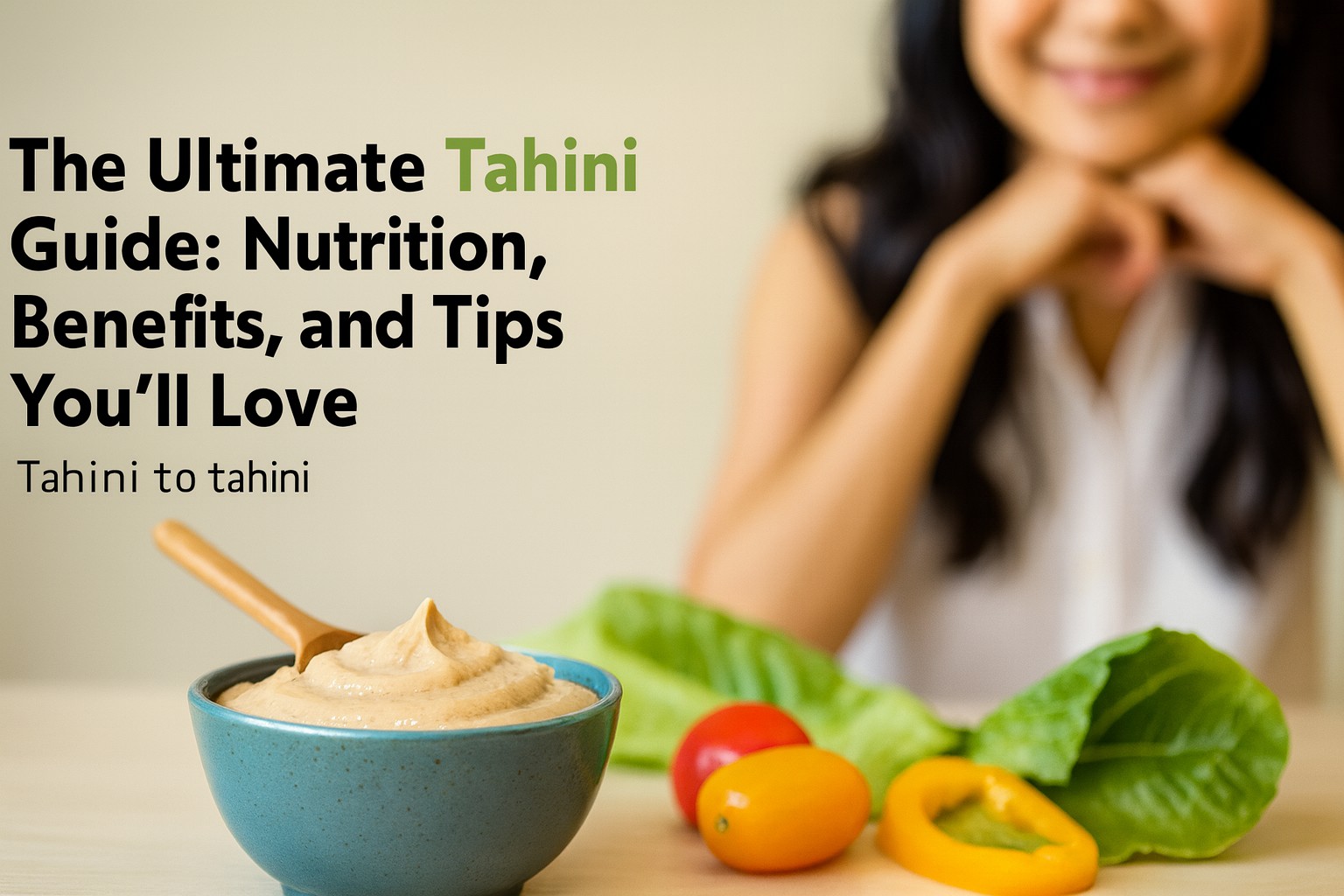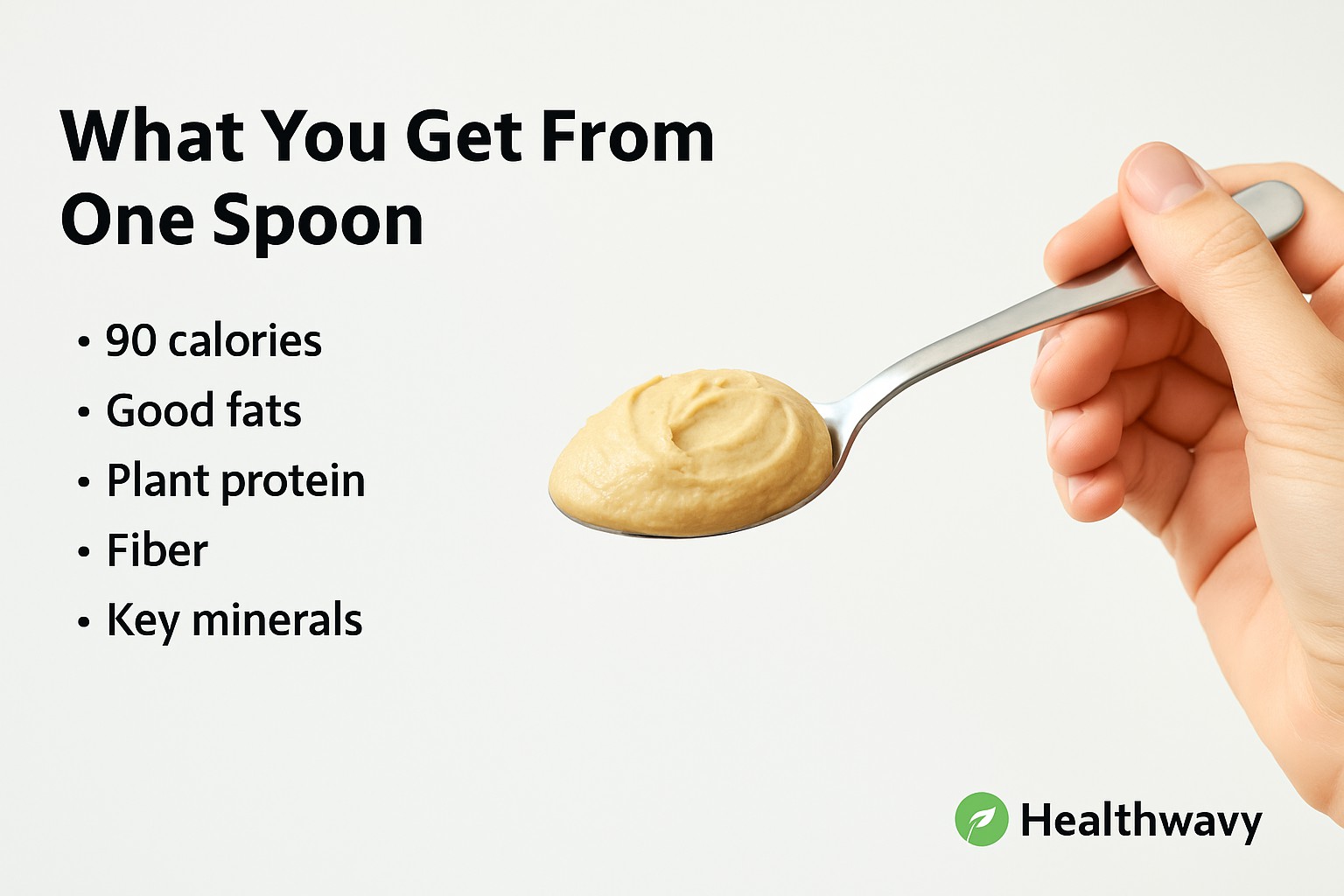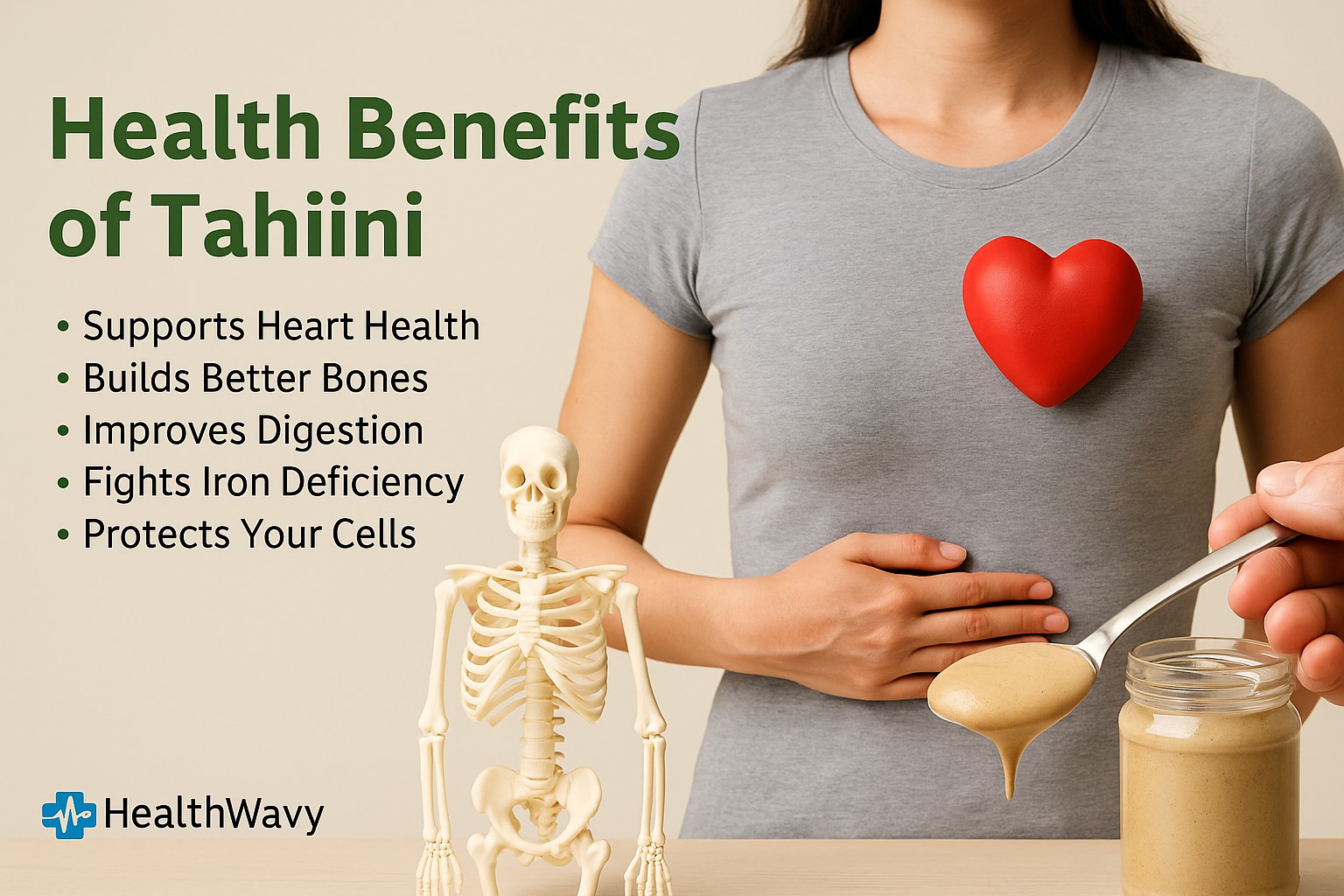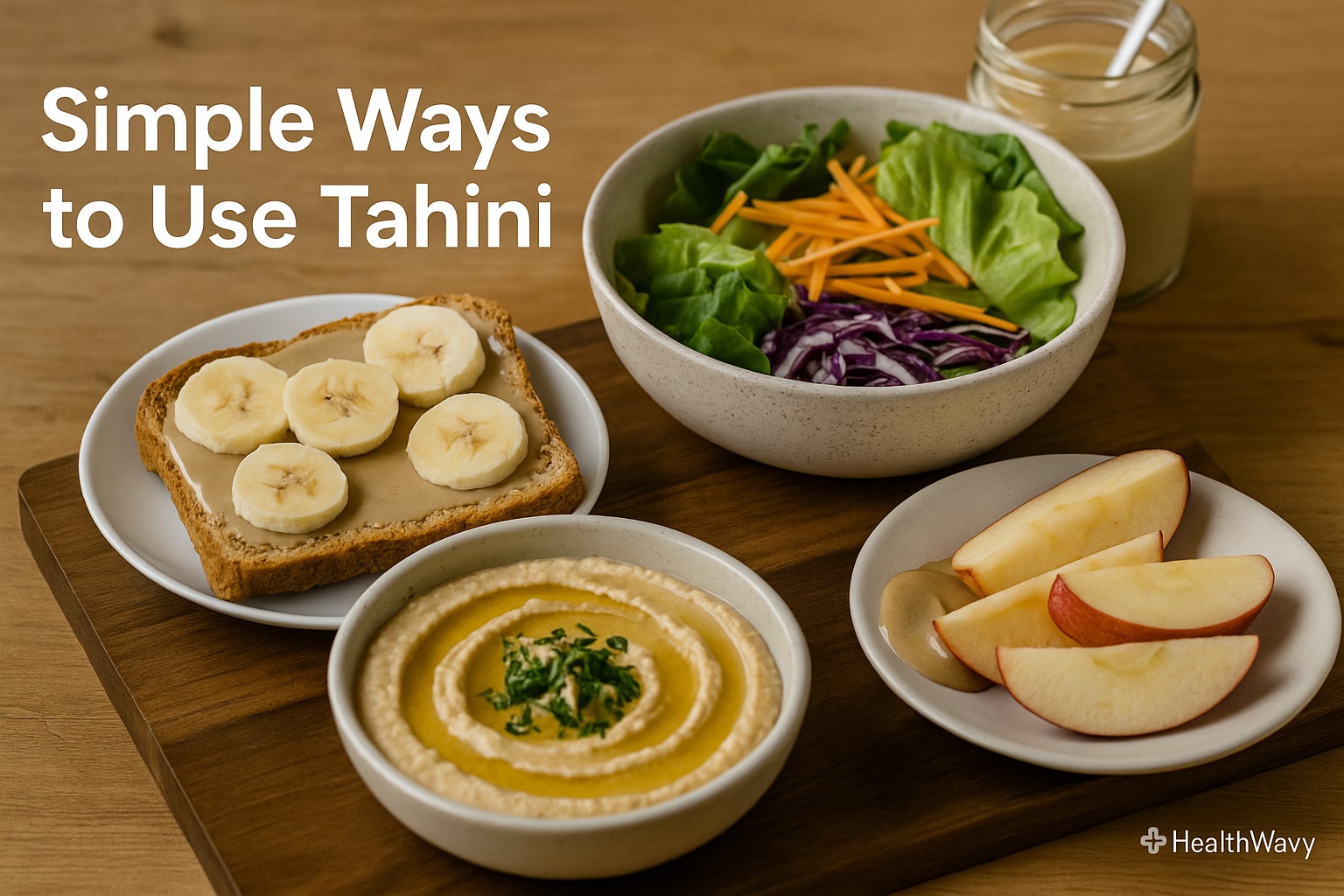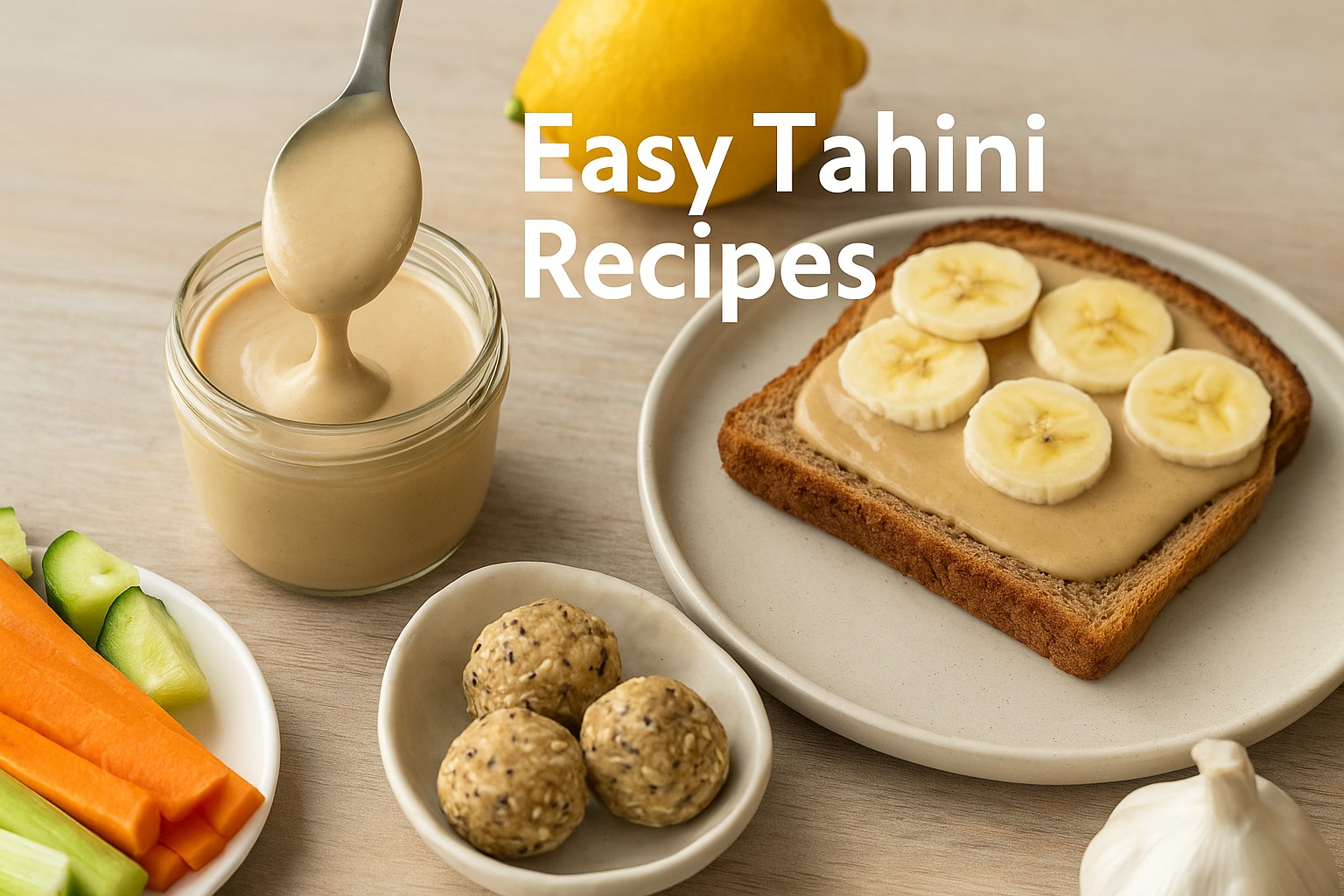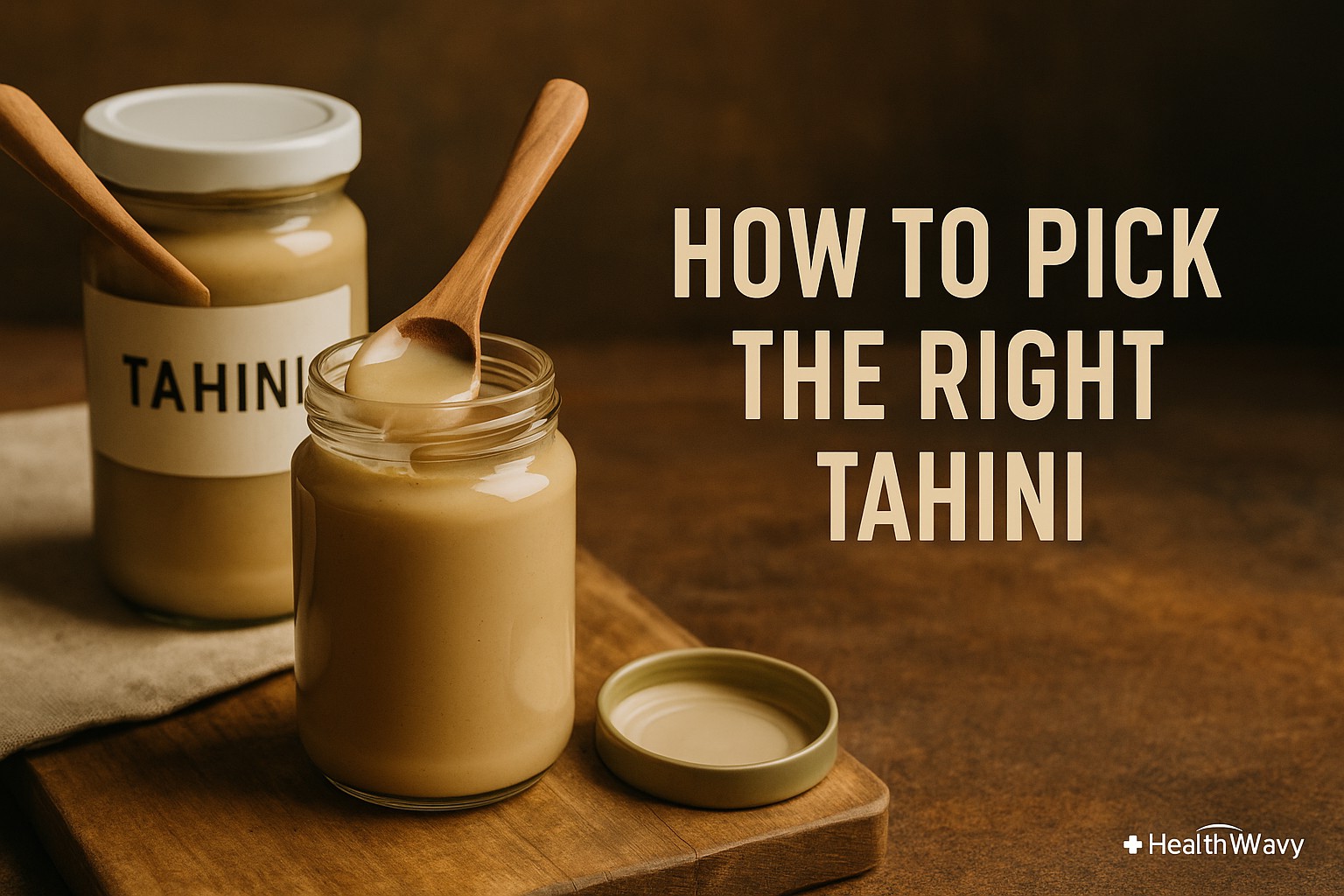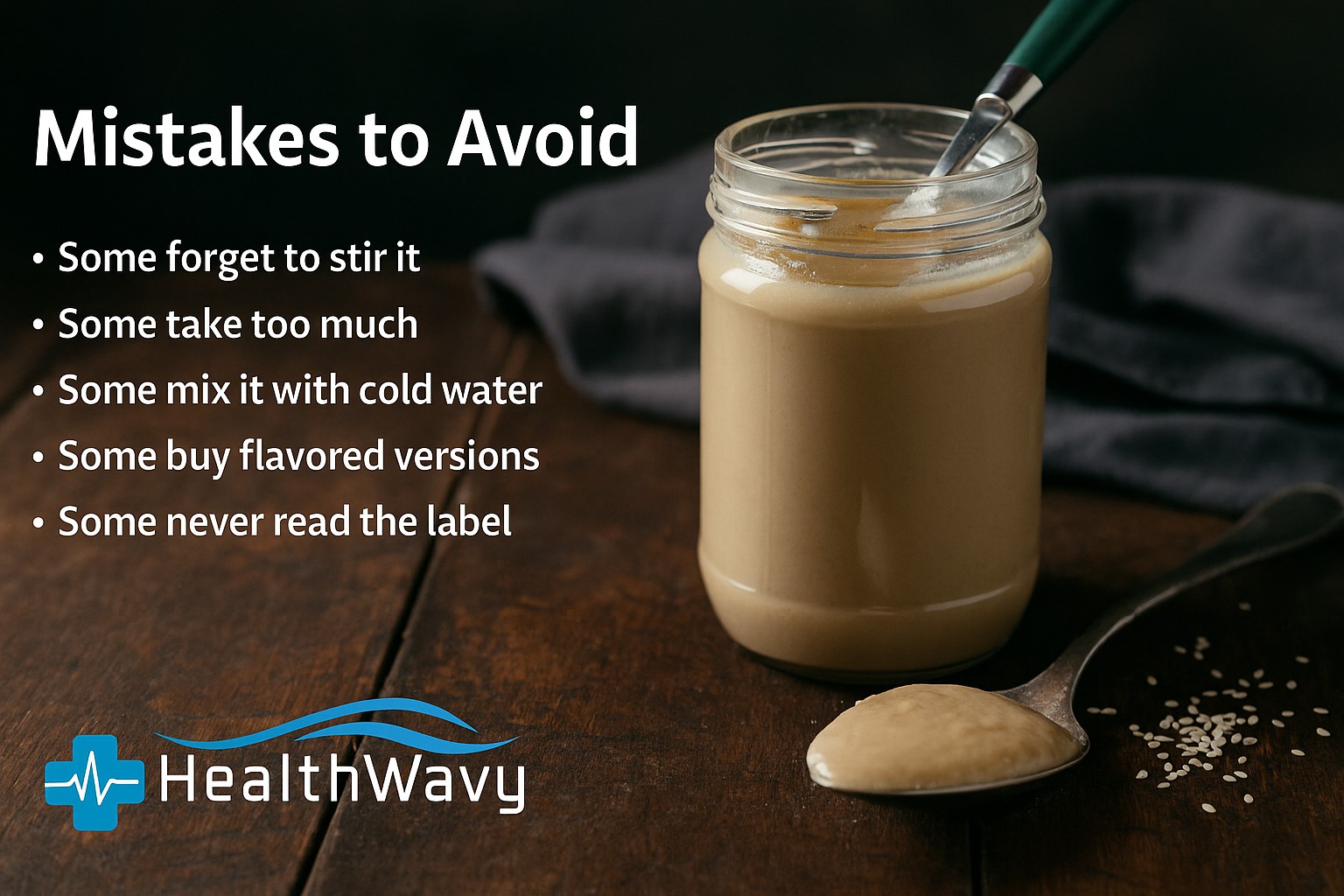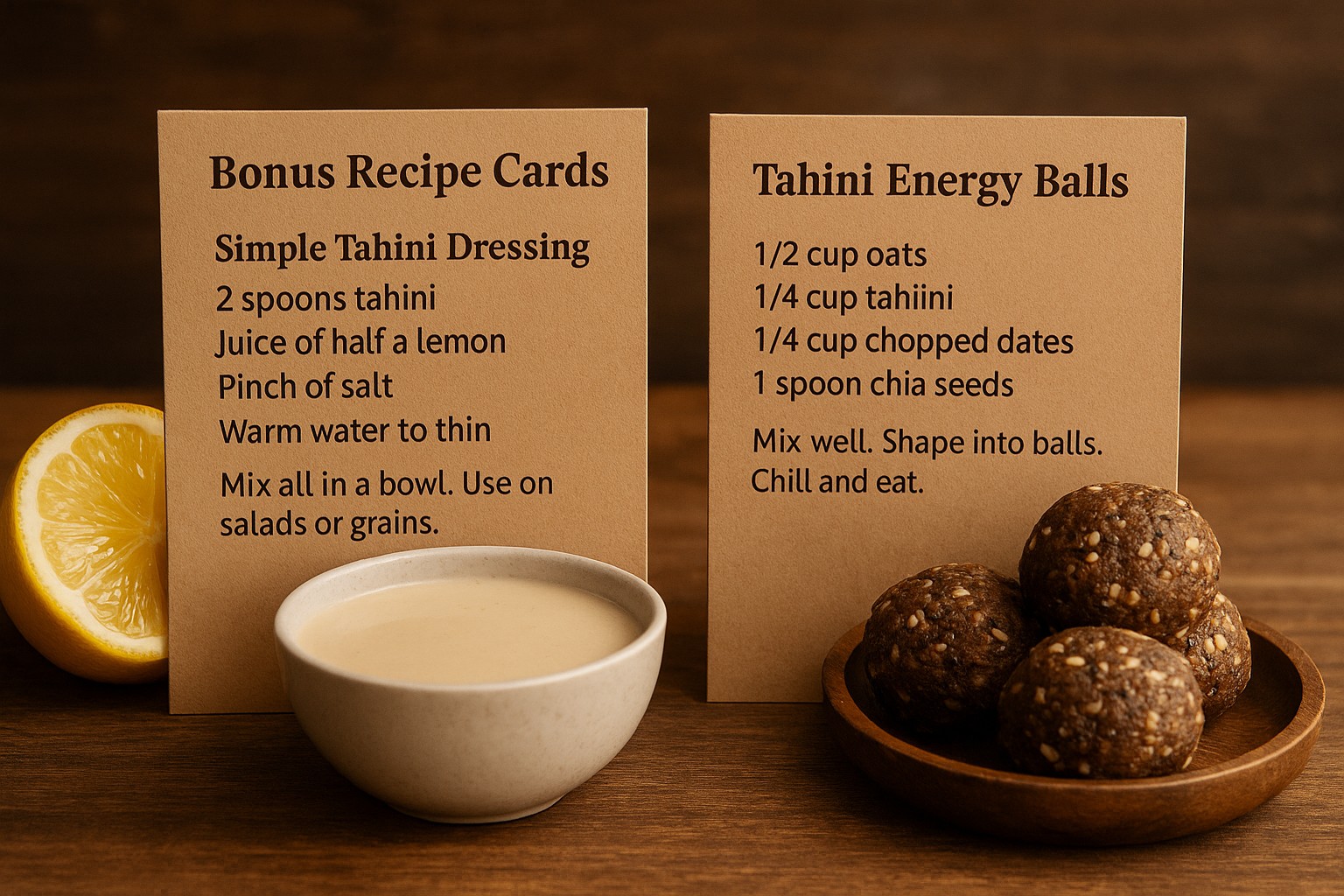Tahini is a thick paste made from sesame seeds. It has a bold, nutty flavor and a smooth texture. You often see it in hummus, sauces, or dressings. But tahini is more than just a topping.
This food gives protein, healthy fat, and minerals in each spoon. It works well in vegan, dairy-free, or nut-free diets. One serving can bring real value to your meal.
Tahini also has a rich past. People have used it for thousands of years. Today, it is a part of kitchens around the world. This guide will show how tahini helps your body and how you can use it with ease.
What Is Tahhiini?
Tahini (Tahhiini) comes from sesame seeds. These seeds are ground into a smooth, oily paste. You can use raw or roasted seeds. Each type gives a different taste and color.
Tahini looks light brown or beige. It has a rich, earthy taste. Some jars are thick, others pour easily. All can blend well with other foods.
Pure tahini has no sugar. Some brands add salt, but real tahini only needs one thing-sesame. You can use it in sweet or savory meals. It works in sauces, dips, or spreads.
Where It Started
People first used sesame seeds in ancient lands. In Mesopotamia and Egypt, sesame was food and medicine. They crushed it into oils and pastes.
Later, traders carried it west. It spread into Greek and Middle Eastern kitchens. Over time, tahini became a common part of daily food. Now you can find it in homes and stores worldwide.
Tahhiini has lasted because it is useful. It tastes good. It gives strength. It does not spoil fast. It fits into meals without effort.
What You Get From One Spoon
Tahini looks plain, but it gives real strength. One spoon offers more than flavor. It feeds your body with clean fuel.
Each spoon holds about 90 calories. Most of that comes from good fats. These fats help your heart and support vitamin use.
Tahini gives plant protein too. You get around two and a half grams per spoon. This helps muscles grow and keeps hunger away. It may not be meat, but it still matters.
Fiber is part of the deal. One spoon adds just enough to help your stomach stay on track. It helps you feel full and steady.
You also get minerals that matter. Iron moves oxygen in your blood. Calcium builds bones. Zinc and magnesium support your body’s defense. These nutrients do quiet work that keeps you strong.
There’s more. B vitamins help turn food into energy. They keep your mind clear and your body sharp.
Tahini does all this with no sugar, no fillers, and no tricks. Just one spoon. Just one seed. That’s enough.
This is real food. Simple. Clean. Complete. Tahhiini proves that even one small scoop can do big things.
Health Benefits of Tahiini
Tahini does more than add taste. It gives your body strength. One small spoon can help your heart, bones, stomach, and blood. It fits many clean diets and works well in daily meals.
Supports Heart Health
Tahini contains good fats. These fats do not clog your arteries. They may lower bad cholesterol. They also help your blood move without strain. That puts less pressure on your heart. Over time, this can reduce your risk of heart problems. A strong heart keeps you active and sharp.
Builds Better Bones
Your bones need support. They need minerals to stay solid. Tahini gives calcium and magnesium. These minerals help build bone and keep it from breaking down. Weak bones can lead to pain or injury. A spoon of tahini adds strength without effort. It helps you stay steady as you age.
Improves Digestion
Tahhiini gives fiber. Your gut needs fiber to stay regular. It helps your body remove waste. It also keeps your stomach calm. A healthy gut supports your mood, weight, and energy. When your stomach works right, your whole body feels better. Even a small dose of fiber can help.
Fights Iron Deficiency
Iron moves oxygen in your blood. You need it to stay awake and focused. Tahini gives a plant-based source of iron. That makes it helpful, especially for people who avoid meat. Low iron causes weakness, poor focus, and cold hands. Adding tahini can give your iron levels a steady boost.
Protects Your Cells
Your body fights stress every day. Tahini gives compounds that may protect your cells. These include sesamin and sesamol. They act like shields inside your body. They help fight off damage from toxins and stress. Over time, this may reduce signs of aging. It may also lower the risk of long-term illness.
Fits Many Diets
Tahini works in plant-based diets. It has no dairy. It has no gluten. It does not contain nuts. People with allergies often use it safely. It fits into vegan, vegetarian, and clean eating plans. One food, many uses. It gives real value without risk for most people.
May Help Hormone Balance
Some people use tahini during hormone changes. Women going through menopause may find relief from sesame seeds. The natural oils in tahini may help the body adjust. More research is needed. But early results show promise. This makes tahini a safe option for gentle daily support.
Simple Ways to Use Tahhiini
Tahini works in many meals. It has a smooth feel and a bold, nutty taste. You can use it in sweet food or salty dishes. One spoon can change how a meal looks and feels.
Start the Day with Tahini
Spread tahini on warm toast. Add banana slices or a little honey. It also works well in oatmeal. Mix it with soft fruit or chopped dates. You can also stir a spoon into yogurt. That gives a creamy mix that holds you over until lunch.
Some people add Tahhiini to pancakes or waffles. It blends with maple syrup or berries. You do not need much to taste the difference. Just one spoon can make breakfast feel new.
Make Lunch More Filling
Tahini makes salads taste better. Mix it with lemon juice and salt. Use that as a dressing. You can also use tahini inside wraps. It holds sliced veggies and greens together.
You can dip raw carrots or celery in plain tahini. That makes a fast, clean lunch with no cooking. You can even pair it with pita bread or baked chips.
Add It to Dinner Plates
Tahini turns hot soup rich and smooth. Add it after the soup is done. Stir until it blends in. It works in lentil, squash, or tomato soups.
Tahini also adds flavor to cooked grains. Pour it over rice, couscous, or bulgur. Add steamed greens or roasted vegetables on top. You can also mix it with garlic and water to make a sauce for roasted chicken or baked fish.
Turn Tahini into Snacks
Tahini works well in small treats. Spread it on apple slices. Use it with dates or dried apricots. You can also blend it with honey and oats to make snack bars.
Many people use tahini in no-bake bites. Mix it with seeds, nuts, and crushed cereal. Chill the mix and cut it into small squares. These snacks store well and fill you up fast.
Easy Tahini Recipes
Tahini works best in simple recipes. You do not need special tools or cooking skills. Just a few clean ingredients and a spoon.
Creamy Tahhiini Sauce
This sauce takes only minutes to make. It adds bold flavor to many dishes.
Use half a cup of tahini. Add the juice of one lemon. Mash one clove of garlic. Sprinkle a little salt. Add warm water until it reaches a smooth texture.
Stir well until creamy. You can pour this sauce over salads, grain bowls, or roasted vegetables. It also works as a dip for pita or fresh carrots.
Tahhiini Toast with Banana
This is a fast, healthy breakfast or snack.
Toast one slice of whole grain bread. Spread one spoon of tahini across the surface. Add a few banana slices. Finish with a light sprinkle of cinnamon.
The toast tastes rich and sweet. The tahini adds balance and keeps you full. It works well with tea, fruit, or plain yogurt.
No-Bake Tahhiini Bites
These bites offer fuel with no oven time. They also store well in the fridge.
Start with half a cup of rolled oats. Add a quarter cup of tahini. Pour in a quarter cup of honey. Mix in two spoons of chia seeds and a small dash of vanilla.
Stir the mix until thick. Shape it into small balls. Place them in the fridge for one hour. You now have clean, energy-rich snacks on hand.
Osteopur Supplement Guide: Safety, Benefits, Side Effects, and Everything You Need to Know
Extra Ways to Use Tahini
Tahini works in many dishes. Try it in ways you may not know.
Add a spoon to your smoothie. It blends well with dates and banana. Some cafés use tahini in lattes. It adds cream without milk.
Mix it into pancake batter. Spread on baked sweet potato. You can also stir it into curry sauce. It gives a thick feel without cream.
Tahini in World Cuisines
Tahhiini comes from the Middle East. But people use it in many parts of the world.
In Israel, it goes on falafel or shakshuka. In Turkey, it mixes with grape syrup for a sweet dish. In Greece, tahini joins honey for spreads.
Chefs in Europe and the U.S. now use it in desserts. You can find it in brownies, cakes, and more.
How to Pick the Right Tahini
Start with the label. It should only list one ingredient-sesame seeds. That means the tahini is pure. Avoid jars that include extra oils, salt, or sugar. These add things your body does not need.
Some brands use raw sesame seeds. These have a light, mild flavor. Others use roasted seeds. These give a deeper, toasted taste. Both are good. The right one depends on what you like.
Pick a small jar if this is your first time. Test the taste before you buy more. A good jar will have some oil on top. That is normal. It means the product is fresh and natural. Stir the oil back in before using it.
Some tahini is thick. Others pour more easily. Some taste bitter. Others feel smooth. Try a few and see what works best for you.
Buy from trusted brands. Look for jars with no cracks, dents, or leaks. The seal should be tight. The product should not smell sour or feel gritty.
Types of Tahhini
Not all tahini is the same. Some jars use raw sesame. Others use roasted seeds. Both give different flavors.
Raw tahini tastes soft and light. Roasted tahini gives a deeper, rich taste. It works better in sauces and dips.
You may also see “hulled” or “unhulled” tahini. Hulled has the outer shell removed. It feels smooth. Unhulled has more fiber. It tastes a little bitter but gives more minerals.
How to Store It
Tahini keeps well if stored the right way. Before opening, place it in a cool, dark spot like a pantry or cupboard. Heat and sunlight can spoil it.
After opening, keep the jar in the fridge. Cold storage helps keep the oil fresh and the flavor strong.
Always stir the tahini before use. Natural oil will rise to the top. That shows the tahini has no fillers or thickeners. Stir with a clean spoon. This keeps bacteria out and helps the Tahhiini last longer.
Check the texture and smell often. If the paste feels dry or smells sharp, toss it out. Fresh tahini should feel smooth and smell nutty.
Tahini Shelf Life
Tahini lasts a long time if you keep it well. Unopened jars stay fresh for months in a cool space.
Once open, keep it in the fridge. Stir before each use. Use a clean spoon every time.
If it smells off, tastes sharp, or changes color, do not use it. Fresh tahini smells nutty and soft.
Where Does Tahini Come From?
Sesame grows in warm parts of the world. Many farms are in Ethiopia, India, and Sudan. These seeds then go to tahini factories.
Some brands use organic or fair-trade seeds. Check the label. It may tell you if the product supports farmers or clean soil.
Local tahini often tastes fresh. Imported brands may taste rich but cost more.
How Much Tahini Is Safe?
Tahini is rich. A little goes a long way. Most people do well with one or two tablespoons a day. That amount gives protein, healthy fats, and minerals without extra calories.
Use tahini with real food. Mix it into cooked vegetables, fruit bowls, or whole grains. It also works in salad dressings or small snacks. You do not need a big scoop to feel the benefit.
Eating too much tahini can add too many calories. It may also feel heavy if you take more than your body needs. Keep it simple. Use a spoon, not a cup.
Watch how your body feels after each use. If you feel full and strong, the amount is right. If you feel slow or bloated, cut back a bit.
Tahini vs Other Spreads
Tahini is not the only seed or nut spread. Some people compare it to peanut or almond butter.
Tahhini has no sugar unless added. Most nut butters add salt or sugar. Tahini fits better with both sweet and salty food.
Almond and peanut butter have more protein. Tahini gives more iron and calcium. Pick what suits your diet best.
Is Tahini Safe for All?
Most people can enjoy tahini. It is a seed paste, not a nut butter. Some with nut allergies eat it safely.
Still, sesame can cause allergies in some people. Always check with your doctor if you have food issues.
Pregnant people can eat tahini. Just make sure it is fresh and clean. Always store it right to stay safe.
How Tahini Is Made
Tahini comes from sesame seeds. First, they are washed and dried. Then they are roasted or kept raw.
The seeds go into a grinder. They turn into a paste. No oil is added. The oil you see comes from the seed itself.
Some brands add salt or sugar. Pure tahini has one item on the label: sesame seeds.
Mistakes to Avoid
Tahini is simple, but small mistakes can change how it tastes and works. Many people miss its full value because they do not use it the right way.
Some forget to stir it. Natural oil rises to the top of the jar. If you skip the stir, the Tahhiini stays dry at the bottom. You end up with hard paste and weak flavor. Always mix it before each use.
Some take too much. Tahini is rich and dense. One or two spoons are enough. Adding more can make food heavy and hard to digest. Too much can also push up your daily fat and calorie intake.
Some mix it with cold water. That makes it clump. Use room temperature or warm water when you want a smooth texture. This helps the paste stay soft and easy to blend.
Some buy flavored versions. These often include added sugar, oils, or preservatives. They may taste sweet but lose the clean, real value of plain tahini. Choose simple jars with no extras.
Some never read the label. That’s a mistake. You should know what goes into your food. A good jar should only list “sesame seeds.” If it lists more, put it back.
Tahini works best when it is pure and used with care. One small spoon can go far. Keep it simple. Keep it clean. You will taste the difference every time.
Quick FAQ
What is tahini made of?
Tahini comes from ground sesame seeds. Most brands use only the seeds with no added oil or sugar.
Is tahini gluten-free?
Pure tahini has no gluten. It fits into gluten-free and plant-based diets.
Can people with nut allergies eat tahini?
Tahini is not a nut product. It comes from seeds. Some people with nut allergies still react, so caution is smart.
Does tahini need to be refrigerated?
After opening, tahini stays fresh longer in the fridge. Before that, a cool pantry works.
How long does tahini last after opening?
Most jars last up to six months in the fridge. Stir well and always use a clean spoon.
Can tahini help with weight loss?
A small amount of tahini gives healthy fat and protein. It helps you feel full, but portion size matters.
What’s the difference between raw and roasted tahini?
Raw tahini tastes mild and light. Roasted tahini tastes deeper and richer.
Is tahini good for babies?
In small amounts, tahini gives healthy fats and minerals. Always check with a doctor before giving it to babies.
Final Thoughts
Tahhiini is more than a spread. It is real food with real value. It gives your body good fat, protein, fiber, and minerals. One spoon supports your heart, your bones, and your gut.
You do not need to change your whole diet. Just add tahini to what you already eat. It fits into breakfast, lunch, dinner, or snacks. You can stir it, spread it, or mix it. It always works.
This paste has been around for thousands of years. People used it then for the same reason we use it now. It tastes good. It keeps the body strong. It makes meals better without effort.
You do not need much. One spoon is enough. That one step can bring a big change to your daily health.
Start simple. Pick clean tahini. Store it well. Use it with care. Let sesame seeds do their job. The results will speak for themselves.
Read More: Insoya Health Guide: Benefits, Fitness Use, Wellness Impact, and Daily Tips
Bonus Recipe Cards
Simple Tahini Dressing
- 2 spoons tahini
- Juice of half a lemon
- Pinch of salt
- Warm water to thin
Mix all in a bowl. Use on salads or grains.
Tahini Energy Balls
- 1/2 cup oats
- 1/4 cup tahiini
- 1/4 cup chopped dates
- 1 spoon chia seeds
Mix well. Shape into balls. Chill and eat.
Disclaimer:The information in this post is for general knowledge only. It does not replace medical or nutrition advice. Always speak with a qualified health expert before making dietary changes.
Health Note: Every body is different. Enjoy tahini as part of a balanced diet and seek personal guidance from your doctor when needed.

